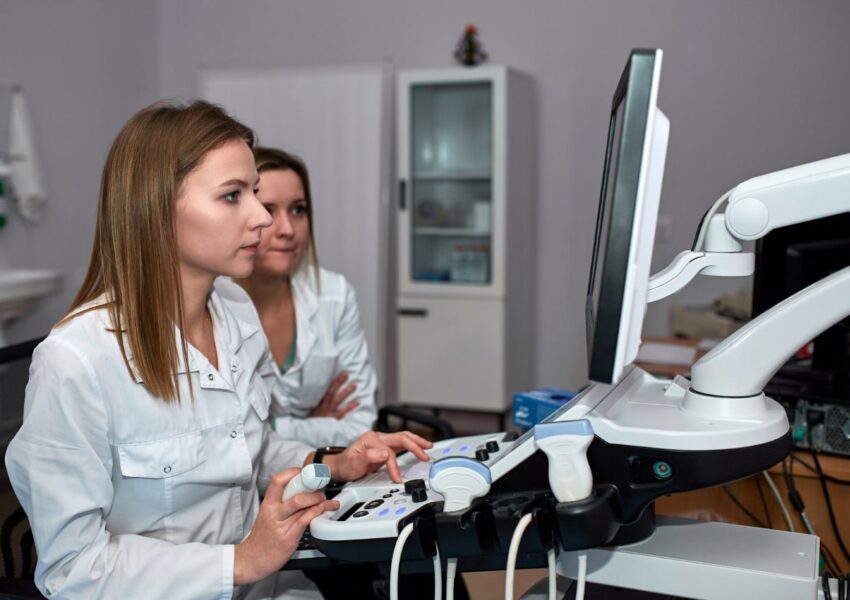
Views: 519
What is ultrasound?
Ultrasound, also known as sonography or ultrasonography, is a non-invasive diagnostic tool used to produce real-time images or videos of internal organs and soft tissues such as blood vessels. Ultrasound uses high-frequency sound waves to visualise internal structures of the body without the need for a surgical incision.
For medical professionals, possessing the knowledge of key ultrasound techniques is important for patient care across a variety of specialties, including obstetrics, emergency medicine, and internal medicine. Here are some essential techniques that every medical professional should know when using ultrasound.
Image optimisation and knobology
Before diving into specific scanning techniques, understanding the ultrasound machine’s basic functions, often referred to as knobology, is critical. Apart from good knowledge of anatomical structures and examination techniques, knowledge of how to achieve the correct machine adjustments for the best image quality and to maximise the potential of ultrasound equipment functions is essential. Mastering functions such as gain, depth, and focus adjustments helps optimise image quality. Proper management of these settings ensures accurate imaging, especially in challenging cases like obese patients or those with fluid buildup.
Basic scanning technique
It is very important to hold the probe correctly for accurate imaging. The probe should be gripped like a pencil, providing full control over its movements. Key motions, including sweeping, fanning, and sliding, help explore the anatomy in detail. Applying adequate gel and consistent pressure are equally important for acquiring clear images.
The FAST exam in emergency medicine
Focused Assessment with Sonography for Trauma (FAST) is an important ultrasound technique used in emergency settings. It helps quickly identify internal bleeding in trauma patients. Medical professionals should be adept at scanning the pericardial, perihepatic, perisplenic, and pelvic areas to detect fluid accumulations that may indicate bleeding.
Obstetric ultrasound
Obstetric ultrasound is essential for monitoring foetal growth and health. Techniques such as measuring foetal biometry, assessing the amniotic fluid index (AFI), and Doppler ultrasound for blood flow analysis are important in antenatal care. Proper interpretation of these images helps in detecting foetal anomalies and ensuring proper foetal development.
From optimising machine settings to performing life-saving scans, proficiency in ultrasound improves diagnostic accuracy and treatment success across various medical fields.
StudyULTRASOUND, a sister concern of StudyMEDIC Academy, offers ISUOG-approved, high-quality training programs designed to support OBG professionals in mastering ultrasound techniques and accurately interpreting scan results. If you want to know more about our programs, please contact our team today.
Authored By: Sarath
By : Admin


